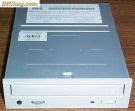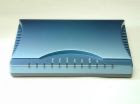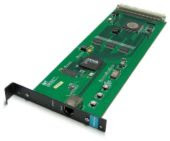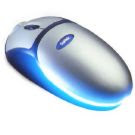Thursday, July 16, 2009
Posted by silver at 11:32 PM 0 comments
Monday, July 6, 2009
Motivasi Pelajar - Makan kurma dan berpuasa, rahsia Azali capai 20 1A
PUTRAJAYA: “Tidak ada rahsia, cuma saya amalkan makan kurma dan minum madu setiap hari serta berpuasa sepanjang peperiksaan selain banyak bersabar dan konsisten dalam mengulangkaji,” kata Azali Aznan, 17 daripada SMKA Yan, Kedah apabila ditanya mengenai rahsia kejayaannya mendapat 20 1A dan 1 2A dalam Sijil Pelajaran Malaysia (SPM) 2007.Azali yang merupakan calon tunggal mengambil 21 mata pelajaran dalam SPM tahun lalu begitu bersyukur kerana segala usahanya selama ini berhasil.“Alhamdulillah, saya begitu bersyukur dan sungguh tidak menyangka mencapai keputusan yang cemerlang memandangkan saya hanya mendapat 18A1 dan 3A2 semasa peperiksaan percubaan.“Justeru saya mengucapkan terima kasih kepada ibu bapa dan guru-guru yang mengajar saya daripada tadika hingga sekolah menengah kerana ini bukan kejayaan saya seorang tetapi kejayaan kami bersama,” katanya selepas diumumkan sebagai antara pelajar cemerlang SPM 2007 oleh Ketua Pengarah Pelajaran Malaysia, Datuk Alimuddin Mohd Dom, di sini, Rabu.Antara mata pelajaran yang diduduki Azali adalah Bahasa Melayu, Bahasa Inggeris, Sejarah, Pendidikan Islam, Mathematics, Science, Kesusateraan Melayu, Geografi, Bahasa Arab Tinggi, Perdagangan, Prinsip Akaun, Ekonomi Asas, Physics, Chemistry, Biology, Tasawwur Islam, Pendidikan al-Quran dan al-Sunnah, Pendidikan Syariah Islamiah, Pendidikan Seni Visual, English for Science & Technology dan Additional Mathematics.Ditanya apa yang mendorongnya mengambil banyak mata pelajaran dalam SPM, beliau yang juga pernah mendapat anugerah Tokoh Nilam Kebangsaan tahun lalu, berkata itu hanya untuk kepuasan dirinya dan juga untuk ibu bapa serta guru. “Saya tidak pernah berniat untuk menandingi sesiapa, cuma saya rasa mampu untuk melakukannya dan ia berhasil,” kata Azali yang juga aktif dalam aktiviti ko-kurikulum di sekolahnya.Azali berkata, hanya 12 mata pelajaran yang menawarkan pembelajaran di dalam kelas manakala bagi sembilan mata pelajaran lagi, beliau hanya mengulangkaji sendiri. “Justeru, saya banyak melakukan solat hajat memohon supaya diberikan petunjuk dan bertawakal kepada Allah,” katanya.Azali berkata, beliau juga tidak mempunyai jadual pembelajaran kerana padanya itu akan membuat beliau berasa tertekan. “Jika ada jadual, kita akan rasa tertekan kerana perlu mengikut jadual yang kita tetapkan itu. “Justeru, saya hanya belajar apabila saya bersemangat tetapi pastikan semangat itu selalu ada,” kata anak kepada pasangan guru, Azlan Osman dan Rozita Sarapir yang berasal dari Sungai Petani, Kedah ini.Azali berkata, jika diberi peluang, beliau ingin menyambung pelajarannya dalam bidang bioteknologi di Amerika atau United Kingdom. “Bagaimanapun, saya sebenarnya tidak kisah sama ada belajar di dalam mahu pun di luar negara asalkan cita-cita saya ingin menjadi seorang professor tercapai,” katanya.
Posted by silver at 5:21 AM 0 comments
Sunday, July 5, 2009
Name of Module : Introduction to Power Point Presentation
Objective : The students should be able to
i. state the steps to launch PowerPoint presentation
ii. state the function of menu bar and toolbars
iii. create a blank slide presentation
iv. use WordArtv.
v.insert picture
vi. insert custom animation
vii. save the presentation
viii. close and exit the presentation
Knowledge and Skills :
i. Launch Power Point 2003 software.
ii. Insert WordArt, picture and custom animation.
iii. Save a file.
iv. Close and exit presentation.
Launch the Power Point Presentation
1. Click Start, All Programs and Microsoft Office.
2. Choose Microsoft Office PowerPoint 2003.
3. A screen as below will be displayed.
4. The display is the interface of Power Point Presentation.
5. There are Menu bar and Toolbars on the top of the window
Insert WordArt
1. On the drawing toolbar, click WordArt
2. Select any ‘WordArt’ style.
3. The WordArt Gallery dialog box appears.
4. When Edit WordArt Text dialog box appears, type the word Myself and click OK as shown below.
Insert Picture
1.Click Insert on the Menu bar, then select Picture from Clipart or Files where your pictures are saved
2.Move the picture anywhere you like on the slide. You may see an example below.
Insert Custom Animation
1.Click Slide Show on the Menu bar and select Custom Animation.
2.The Custom Animation Task Pane appears on the right of the window.
3.Click on the word Myself then click Add Effect on the task pane.
4.Select Entrance from the drop down menu and select any effects such as Checkerboard, Fly In and others.
5.You may modify the effects; start, the speed and direction by clicking the drop down buttons.
6.Click on the picture and then click Add Effect on the task pane.
7.Select Emphasis from the drop down menu and select any effects such as Grow/Shrink, Spin or more effects.
8.You may modify the effects; start, the speed and amount by clicking the drop down buttons.
9.Save your presentation as Myself in My Document.
10.Close and exit your presentation.
Posted by silver at 1:12 AM 0 comments
Sunday, June 28, 2009
Components of a computer CPU:Central Processing Unit. The most powerful microprocessor chip in your computer is the CPU. For example the Intel Pentium chip handles the central management functions of a high-powered PC. Intel's newest Hyper-Threading (technology that allows the CPU to process two separate threads of data simultaneously) CPU supports a 1 megabyte on-board L2 cache (the on-board cache functions as a buffer to feed data to the CPU at a faster rate). The speed of the CPU is measured in GigaHertz (billions of cycles per second).
CPU:Central Processing Unit. The most powerful microprocessor chip in your computer is the CPU. For example the Intel Pentium chip handles the central management functions of a high-powered PC. Intel's newest Hyper-Threading (technology that allows the CPU to process two separate threads of data simultaneously) CPU supports a 1 megabyte on-board L2 cache (the on-board cache functions as a buffer to feed data to the CPU at a faster rate). The speed of the CPU is measured in GigaHertz (billions of cycles per second). RAM:Random-Access Memory. Hardware inside your computer that stores information while you work. RAM is one of the things that makes your computer run faster. RAM is not permanent storage of data. When you turn your computer off, all data in RAM is lost. RAM is available in different types, sizes, and speeds. Currently, depending on the Motherboard, the Intel Celeron D CPU uses PC-2700 ram with 533 MHz FSB (Front Side Bus). The Intel Pentim 4 HT CPU uses PC-3200 DDR (double data rate) ram with 800 MHz Front Side Bus.
RAM:Random-Access Memory. Hardware inside your computer that stores information while you work. RAM is one of the things that makes your computer run faster. RAM is not permanent storage of data. When you turn your computer off, all data in RAM is lost. RAM is available in different types, sizes, and speeds. Currently, depending on the Motherboard, the Intel Celeron D CPU uses PC-2700 ram with 533 MHz FSB (Front Side Bus). The Intel Pentim 4 HT CPU uses PC-3200 DDR (double data rate) ram with 800 MHz Front Side Bus. Hard Drive:A Data Storage medium that houses all of the information in your computer. This would include your operating system (Windows), device drivers, programs, and data you have created using your programs (word documents, spread sheets, etc.).
Hard Drive:A Data Storage medium that houses all of the information in your computer. This would include your operating system (Windows), device drivers, programs, and data you have created using your programs (word documents, spread sheets, etc.).
Unlike RAM the Hard Drive retains data when the computer is turned off. Hard Drives sizes are in GigaBytes or billions of characters. EIDE hard drives spin at a speed of 7200 RPM. Older EIDE hard drives spin at 5400 RPM. New technology hard drives are now on the market, and these are SATA (Serial ATA) hard drives. Currently, these SATA hard drives have speeds approximately the same as EIDE. Looking ahead, the SATA hard drives will be faster and the prices will drop. The SATA hard drives require different MotherBoard technology to support them. MotherBoard:The main circuit board of the computer. All key internal and external components of your computer plug into the MotherBoard, such as the CPU, RAM, Hard Drive, etc. The speed at which information travels across the MotherBoard is referred to as the BUS speed. Recently a new technology has been introduced called PCI Express. This allows a faster data transfer speed across the MotherBoard, especially for video graphics.
MotherBoard:The main circuit board of the computer. All key internal and external components of your computer plug into the MotherBoard, such as the CPU, RAM, Hard Drive, etc. The speed at which information travels across the MotherBoard is referred to as the BUS speed. Recently a new technology has been introduced called PCI Express. This allows a faster data transfer speed across the MotherBoard, especially for video graphics. Case:Often called the "computer", the case houses and provides power to the major computer components, including the MotherBoard, CPU, Hard Drive, RAM, Video Card, Sound Card, etc.
Case:Often called the "computer", the case houses and provides power to the major computer components, including the MotherBoard, CPU, Hard Drive, RAM, Video Card, Sound Card, etc.
Those components not housed in the computer case are usually referred to as "peripherals". The case also houses the power supply. It is important to have a large enough power supply to handle your current and future needs. Also important is that the case be large enough and have enough ball bearing fans so the internal components do not overheat and cause damage to themselves. Miniature cases are to be avoided. Never put your computer in a desk compartment or other small space where it can't breathe. Heat is the enemy of all computers. Monitor:The video display unit that sits on your desktop and serves as your computer screen. Monitors are available in two basic types. The CRT (cathode ray tube - looks like a TV set), called "flat" or "perfect flat" and the LCD (liquid crystal display) called "flat panel"- pictured on the left. The LCD Flat Panel monitors are more expensive, but have a smaller footprint on your desktop. The better LCD monitors can support digital (better) or analog input from the video card. With LCD Monitors we must watch closely the "response time". This is how fast the monitor redraws the picture. If you get a LCD with a slow refresh rate, some video or games may be jerky to watch.Be careful when you buy - rebuilt or refurbished monitors may be called "new" and have a one year warranty. You want a "brand new" monitor with a three year warranty.
Monitor:The video display unit that sits on your desktop and serves as your computer screen. Monitors are available in two basic types. The CRT (cathode ray tube - looks like a TV set), called "flat" or "perfect flat" and the LCD (liquid crystal display) called "flat panel"- pictured on the left. The LCD Flat Panel monitors are more expensive, but have a smaller footprint on your desktop. The better LCD monitors can support digital (better) or analog input from the video card. With LCD Monitors we must watch closely the "response time". This is how fast the monitor redraws the picture. If you get a LCD with a slow refresh rate, some video or games may be jerky to watch.Be careful when you buy - rebuilt or refurbished monitors may be called "new" and have a one year warranty. You want a "brand new" monitor with a three year warranty. Video Card:A circuit board that plugs into a MotherBoard slot, usually an AGP (accelerated graphics port) slot or PCI Express slot (newer/faster/more bandwidth) and handles multimedia applications and graphics-intensive web sites freeing up the CPU (thereby increasing your computers speed). The monitor plugs into the video card which is accessed thru a slot in the back of your computer. The better the graphics chip on the video card, and the more ram built on the video card, the faster the display on the monitor. Top of the line games need very high performance video cards. Better Video Cards have both Digital (better) and Analog outputs.
Video Card:A circuit board that plugs into a MotherBoard slot, usually an AGP (accelerated graphics port) slot or PCI Express slot (newer/faster/more bandwidth) and handles multimedia applications and graphics-intensive web sites freeing up the CPU (thereby increasing your computers speed). The monitor plugs into the video card which is accessed thru a slot in the back of your computer. The better the graphics chip on the video card, and the more ram built on the video card, the faster the display on the monitor. Top of the line games need very high performance video cards. Better Video Cards have both Digital (better) and Analog outputs.
Speakers:Produce sound (music, voice, etc.) based on data created and sent by the sound card. Today, computer speakers have become very high quality and many include a sub-woofer for good bass.

Sound Card:A circuit board that plugs into your MotherBoard that adds audio capability to your computer, providing high quality stereo output to the speakers.
 CD-ROM:Compact Disk - Read Only Memory. An optical storage technology that stores and plays back data. "Read Only" means the information can be displayed and used or copied, but cannot be deleted or changed (on the disk). One CD-ROM can hold around 650 megabytes of data, or the equivalent of 450 floppies. The speed of a CD-ROM refers to how fast the disk spins in the device.CD-Burner or DVD/CD BurnerA CD Burner is the informal name for a CD recorder, a device that can record data to a compact disc. CD-Recordable (CD-R) and CD-Rewritable (CD-RW) are the two most common types of drives that can write CD's, either once (in the case of the CD-R) or repeatedly (in the case of the CD-RW). In the CD-R recording process, the data is actually etched into the disc (burned) with a laser. In the CD-RW process the disk must first be formatted (burned) and then data is copied to or erased from the CD-RW media. Almost all burners can do both tasks - record (CD-R) and rewrite (CD-RW). The best way to determine this is from the specs. "52x32x52a" would be a spec for a current burner. The 52x means the record speed (CD-R), the 32x means the rewrite speed (CD-RW) and the 52a (a = average) means the read speed. If you have a CD-Burner, then a separate CD-ROM is not necessary.The DVD Burners read, write, and re-write to DVD,s and read, write, and re-write to CD's. If you have a DVD Burner, then a separate CD-Burner is not necessary.
CD-ROM:Compact Disk - Read Only Memory. An optical storage technology that stores and plays back data. "Read Only" means the information can be displayed and used or copied, but cannot be deleted or changed (on the disk). One CD-ROM can hold around 650 megabytes of data, or the equivalent of 450 floppies. The speed of a CD-ROM refers to how fast the disk spins in the device.CD-Burner or DVD/CD BurnerA CD Burner is the informal name for a CD recorder, a device that can record data to a compact disc. CD-Recordable (CD-R) and CD-Rewritable (CD-RW) are the two most common types of drives that can write CD's, either once (in the case of the CD-R) or repeatedly (in the case of the CD-RW). In the CD-R recording process, the data is actually etched into the disc (burned) with a laser. In the CD-RW process the disk must first be formatted (burned) and then data is copied to or erased from the CD-RW media. Almost all burners can do both tasks - record (CD-R) and rewrite (CD-RW). The best way to determine this is from the specs. "52x32x52a" would be a spec for a current burner. The 52x means the record speed (CD-R), the 32x means the rewrite speed (CD-RW) and the 52a (a = average) means the read speed. If you have a CD-Burner, then a separate CD-ROM is not necessary.The DVD Burners read, write, and re-write to DVD,s and read, write, and re-write to CD's. If you have a DVD Burner, then a separate CD-Burner is not necessary. Modem:A circuit board that plugs into your MotherBoard that enables your computer to communicate with other computers and the Internet. Phone lines are "analog" and computers are "digital" so the modem has the job to MOdulate and DEModulate between analog and digital, thus the name MODEM.Special Note: For today's Internet User the old telephone modems are all but obsolete - try to obtain Cable or DSL Internet service.
Modem:A circuit board that plugs into your MotherBoard that enables your computer to communicate with other computers and the Internet. Phone lines are "analog" and computers are "digital" so the modem has the job to MOdulate and DEModulate between analog and digital, thus the name MODEM.Special Note: For today's Internet User the old telephone modems are all but obsolete - try to obtain Cable or DSL Internet service. Ethernet Card:A circuit board that plugs into your MotherBoard and provides the capability to connect or "Network" your computer to other computers and/or the Internet. If you use a cable modem, your computer will need an Ethernet card. Ethernet cards come in different speeds. A 10 Mbps card can transmit/receive at 10 million bits (8 bits to a byte) per second. A 10/100/1000 Mbps card can transmit/receive at up to 1000 million bits per second.
Ethernet Card:A circuit board that plugs into your MotherBoard and provides the capability to connect or "Network" your computer to other computers and/or the Internet. If you use a cable modem, your computer will need an Ethernet card. Ethernet cards come in different speeds. A 10 Mbps card can transmit/receive at 10 million bits (8 bits to a byte) per second. A 10/100/1000 Mbps card can transmit/receive at up to 1000 million bits per second. Keyboard:The peripheral device used to input information into a computer. It provides a set of alphabetic, numeric, punctuation, symbol and control keys. When a character is pressed, it sends a coded input to the computer, which then displays the character on the Monitor. Keyboards are available in corded and wireless models. Keyboards should come with a wrist rest.
Keyboard:The peripheral device used to input information into a computer. It provides a set of alphabetic, numeric, punctuation, symbol and control keys. When a character is pressed, it sends a coded input to the computer, which then displays the character on the Monitor. Keyboards are available in corded and wireless models. Keyboards should come with a wrist rest. Mouse:A peripheral device connected to your computer, used to reposition the cursor or move the pointer on your screen. A mouse usually has at least two buttons, you can use to highlight text, open menu items, launch programs, etc. A mouse can be corded or wireless. Some mice have a ball on the bottom that rolls as you push the mouse, and some mice have optical function. No ball, the mouse senses the movement by an optical beam it emits. There is no need for a mousepad with an optical mouse.
Mouse:A peripheral device connected to your computer, used to reposition the cursor or move the pointer on your screen. A mouse usually has at least two buttons, you can use to highlight text, open menu items, launch programs, etc. A mouse can be corded or wireless. Some mice have a ball on the bottom that rolls as you push the mouse, and some mice have optical function. No ball, the mouse senses the movement by an optical beam it emits. There is no need for a mousepad with an optical mouse. Floppy Drive:A device in your computer that allows removable (a floppy disk) storage. Data can be written to or read from a floppy disk in a floppy drive. Each floppy disk can be removed, so you can store data on more than one disk.
Floppy Drive:A device in your computer that allows removable (a floppy disk) storage. Data can be written to or read from a floppy disk in a floppy drive. Each floppy disk can be removed, so you can store data on more than one disk.Operating System:The foundation software of a computer system. Responsible for controlling and launching the installed applications and computer peripherals. It schedules tasks, allocates storage, handles the interface to peripheral hardware and presents a "default" interface to the user when no application program is running.
Posted by silver at 1:27 AM 0 comments
Sunday, April 26, 2009
Hi,my name is Gerald James.I study in Sekolah Menengah Kebangsaan Sultan Badlishah.
Posted by silver at 1:23 AM 0 comments
Labels: silver